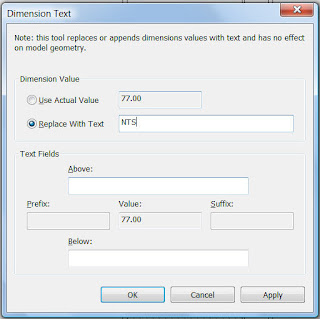Actually, this should be called the top 10 features of
Revit Architecture 2010 as it is taken right off the
Autodesk Revit Architecture Top 10 Features. However, just to answer some of my customers who ask me the reason for them to upgrade to
Revit Architecture 2010. So here goes. (Excuse me for the language used. I know they are a bit nauseating...)
1 Conceptual Design Environment
New and innovative
Autodesk Revit Architecture conceptual design features provide easy-to-use tools for free-form modeling and parametric design, and the ability to perform early design analyses. Sketch freely, create 3D forms quickly, and manipulate forms interactively. Prepare your models for fabrication and construction with built-in tools for conception and clarifi cation of complex forms.
Autodesk Revit Architecture automatically builds a parametric framework around your most complex forms as you continue to design, offering you greater levels of creative control, accuracy, and flexibility. Take your design from concept model all the way through construction documents, all within one intuitive environment.
2 Building Maker
The Building Maker feature helps you transform your conceptual forms into fully functional designs. Select and add faces to design walls, roofs, floors, and curtain systems. Extract important building information, including gross area per floor. Bring conceptual massing concepts from applications such as
AutoCAD software and
Autodesk Maya software, as well as
AutoDes-Sys form-Z,
McNeel Rhinoceros,
Google Sketch-Up, or other ACIS- or NURBS-based applications into
Autodesk Revit Architecture as mass objects and begin schematic design.
3 Bidirectional Associativity
A change anywhere is a change everywhere. In
Autodesk Revit Architecture, model information is stored in a single, coordinated database. Revisions and alterations to information are automatically updated throughout the model, minimizing conflicting versions and significantly reducing unpleasant surprises.
4 Parametric Components
Parametric components, also known as families, are the basis for all building components designed in
Autodesk Revit Architecture. These components offer an open, graphical system for design thinking and form making, while providing the opportunity to adjust and express design intent at detailed levels. Use parametric components for the most elaborate assemblies, such as cabinetry and equipment, as well as for the most elementary building parts, such as walls and columns. Best of all, no programming language or coding is necessary or required.
5 Schedules
Schedules provide another view of the comprehensive
Autodesk Revit Architecture model. Changes to a schedule view are automatically reflected in all other views. Functionality includes associative split schedule sections and selectable design elements via schedule views, formulas, and filtering.
6 Detailing
The extensive detail library and detailing tools provided within
Autodesk Revit Architecture enable extensive presorting, easing alignment with the CSI format. Detail libraries can be created, shared, and tailored to accommodate your office standards.
7 Material Takeoff
Calculate detailed material quantities with the Material Takeoff feature. Ideal for use on sustainable design projects and for precise verification of material quantities in cost estimates, this feature significantly smoothed the material quantity tracking process. As projects evolve, the
Autodesk Revit Architecture parametric change engine helps ensure material takeoffs are always up to date.
8 Intuitive User Interface
The
Autodesk Revit Architecture 2010 features a streamlined user interface. Find your favorite tools and commands faster, locate lesser-used tools more efficiently, and discover relevant new features more easily. The result is less time searching through menus and toolbars, and more time getting your work done.
9 Sustainable Design Autodesk Revit Architecture
Autodesk Revit Architecture supports sustainable design processes from the earliest stages. Export building information to green building extensible markup language (gbXML). Perform energy analysis using
Autodesk Green Building Studio web based services, and study building performance employing
Autodesk Ecotect software. Use
Autodesk 3ds Max Design software to accurately evaluate indoor environmental quality in support of
LEED 8.1 certification.
10 Design Visualization
Create and capture fully photorealistic design ideas and contextual environments to experience your project, even before it is built. Integrated
mental ray rendering helps deliver high-quality output, faster render times, and a superior design presentation.














